Universal, sixty years of the first Mercedes station wagon

Based on the W 110, the famous "Fin Tail" sedan, popularly known in Spain as the "Mercedes tail" due to its distinctive rear fins, the model presented on January 20 at the Salon de L'Automobile de Bruxelles is none other than the German brand's first station wagon. Speaking of which, we're talking about sales at official dealerships, the production model is handcrafted by the Belgian firm IMA, using bodies supplied by the manufacturer.
The Universal offered a cargo volume of 2.71 cubic meters behind the front seats, allowing for the transport of up to 710 kilos. Therefore, this spacious body variant was equipped with 15-inch wheels larger than the sedan and reinforced springs.
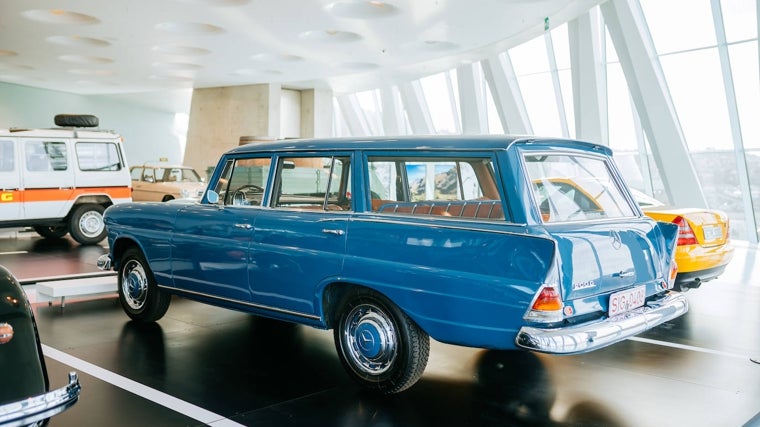 The Universal's bodywork perfectly integrates the characteristic rear fins of the W 110
PF
The Universal's bodywork perfectly integrates the characteristic rear fins of the W 110
PF
The press kit from the time describes the effort put into the design and construction of the body: "Although the exterior lines already underline that this is a vehicle with a special character, rather than a car whose rear end has simply been modified or enlarged, a closer examination of the uniform structure of the body shows that the design has been created as an inseparable whole."
A glance at the rear compartment reveals a design that strives for practicality and functionality, yet also strives for appeal. Brown artificial leather gives the interior a cozy feel. The trunk floor mimics fine mahogany. In fact, it's "Panolux," as the press pack explains: a composition of wood fibers and Bakelite resin. This material, it continues, "guarantees maximum protection against scratches, stains, wear, etc., not to mention the touch of luxury it gives the car." What's more: "Using a wood floor made of such a valuable material as "Panolux" is more expensive than painted sheet metal, but in addition to its luxurious appearance, it offers the advantage of good sound insulation." Bolt-on chrome strips with rubber sections prevent cargo from slipping. The rear seat can be folded down to create a cargo area approximately 1.90 meters long.
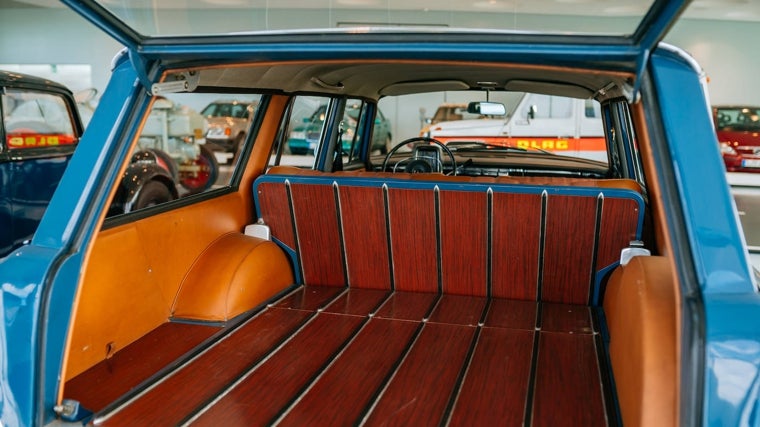 The trunk floor is made of "Panolux," a composition of wood fibers and Bakelite resin.
PF
The trunk floor is made of "Panolux," a composition of wood fibers and Bakelite resin.
PF
Initially presented as the 190 D Universal, four variants of the estate sedan followed from 1967, based on the 200 D, 200, 230, and 230 S models. The first two had four-cylinder engines, the other two with six-cylinder engines. The 230 S Universal played a special role: it was assigned to the W 111 model series, which, despite the body similarity to the 110, was already in the highest segment of the Mercedes range. It is distinguished by the front section typical of corresponding sedan models, with vertical rectangular headlights and sumptuous chrome trim. It was a precursor to the later high-end estate cars, thus demonstrating a change in approach, where an estate was no longer simply a more spacious car, but also a reflection of a lifestyle where leisure and free-time activities took on greater importance.
In addition, it now featured the new hydropneumatic suspension adjustment for greater comfort and safety, as it automatically adapted to the weight of the load.
The Universal elevated public perception of the "Fin Tail" model series in a unique way: its successful combination of spaciousness, comfort, performance, value for money, and economy was considered ideal. The rigid passenger compartment with front and rear crumple zones also set new safety standards at the time, like the sedan from which it was derived.
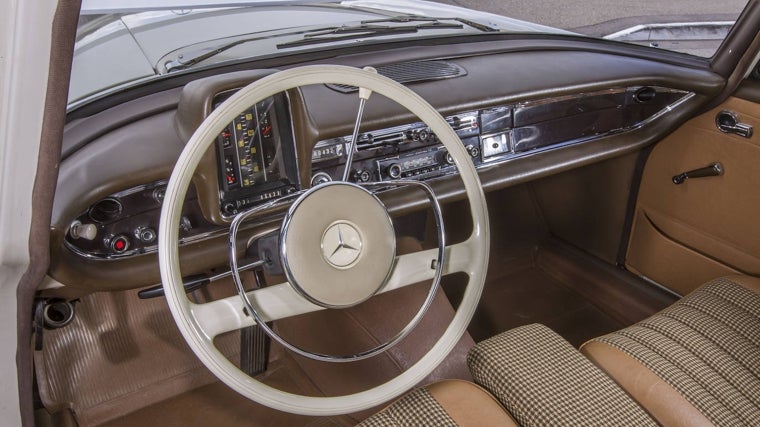 The Universal's dashboard takes us back to 1965
PF
The Universal's dashboard takes us back to 1965
PF
Between 1965 and 1968, only 2,754 units of the first Mercedes-Benz estate were built, out of a total of 622,453 sedans and 5,859 chassis with partial bodies that left the Sindelfingen plant during these six and a half years of production of the 110 series.
Twelve years later, in 1977, Mercedes introduced its first mass-produced estate car. It was based on the 123 series sedan and went on sale in 1978.
Several decades have passed, and Mercedes has remained faithful to its station wagon versions in the current E-Class. Hence, our journey through history ends at the wheel of an impeccable E 220 d Estate. A station wagon measuring 4.95 meters long and 1.47 meters high.
The journey through this E220 d estate begins with the trunk. A very low threshold to limit the risk of back pain when loading and unloading heavy items, a flat floor, and perfect geometric shapes: the basic specifications of a good family car are met to the letter. And a gigantic cargo capacity: 615 liters.
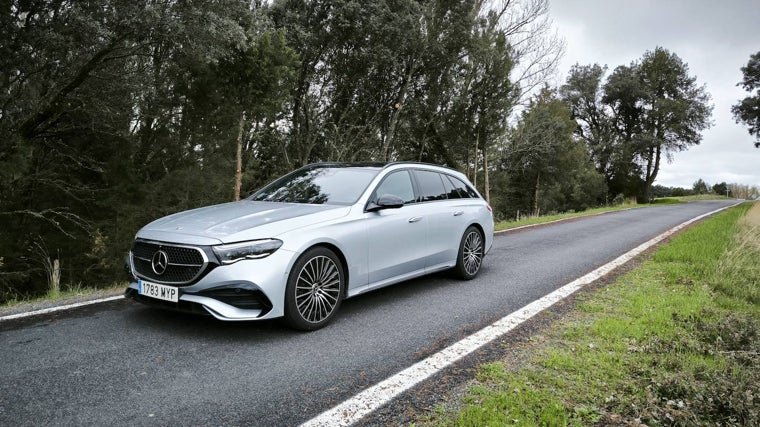 The current 220 d, heir to a family tradition born sixty years ago
PF
The current 220 d, heir to a family tradition born sixty years ago
PF
Added to this useful volume is an undeniable practicality. As much as, or even more than, the standard electrically opening and closing tailgate, we appreciate the self-raising luggage cover for easy access to the trunk, or the anti-intrusion net that allows for maximum loading without risk to passengers. And this E-Class estate car isn't afraid of heavy loads thanks to the standard pneumatic level corrector. Finally, it can be equipped with an electrically deployable towbar, an option that includes trailer stabilization—via ESP—a feature that can also be combined with assistance that helps with maneuvers by combining camera vision and, above all, adjusting the desired steering and articulation angle. So, the car does the work.
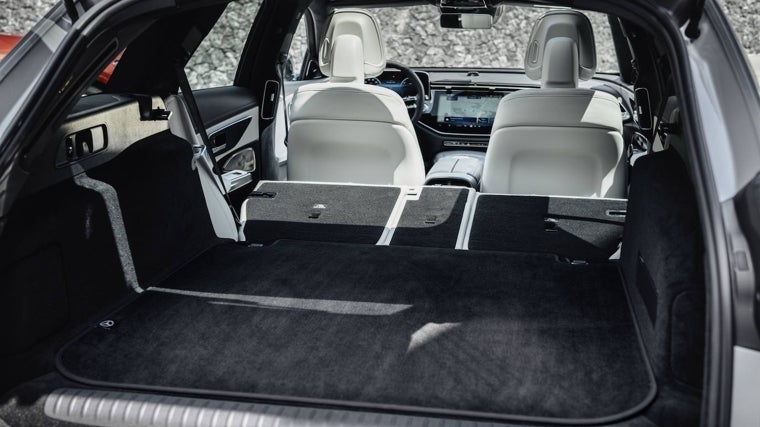 The rear hides a huge trunk
PF
The rear hides a huge trunk
PF
Like the sedan, the Estate E is appreciated for its road holding and high-level comfort, a link with previous generations that doesn't prevent the current E-Class from making its predecessors look outdated in terms of on-board equipment. Like the flagship's top-of-the-range electric models, the dashboard has been updated to a full-screen display with two massive panels as standard, to which a touchscreen positioned in front of the passenger can be added, only activated if their presence is detected in the seat.
Enough to turn the passenger into a true co-pilot, as they can control a large number of functions. And, if that weren't enough, they can also stream the latest episode of their favorite series, knowing that the screen is not visible to the driver for obvious safety reasons, or participate in a video conference.
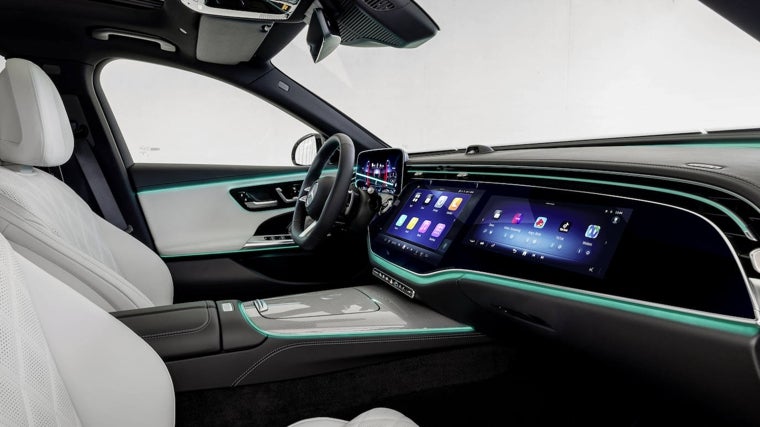 Dashboard of the Mercedes E-Class Estate
PF
Dashboard of the Mercedes E-Class Estate
PF
But if these features place the E-Class in its time, even though they may seem trivial to some, they reflect the foundations of its breed with countless customization possibilities and a meticulous finish. In any case, it's truly a pleasant ride in this car, both in the front and rear, where two privileged passengers have plenty of space, although the center seat occupant won't be as comfortable due to the firm backrest and large transmission tunnel.
If the maximum braked payload (2,100 kg) doesn't impress the driver of a large SUV, this E-Class estate will win you over with other qualities. Thus, this estate is perfect for covering hundreds of kilometers thanks to its 197 hp diesel engine and 440 Nm of torque. Although, outside rather than inside, the sound discreetly betrays its diesel character, this four-cylinder deserves a very high mark. Well supported by a discreet micro-hybrid system with a small 23 hp electric motor and 205 Nm of torque integrated into the efficient nine-speed gearbox, it offers more than sufficient performance: a top speed of 230 km/h and acceleration from 0 to 100 km/h in 7.9 seconds. Furthermore, its fuel consumption is extraordinarily low.
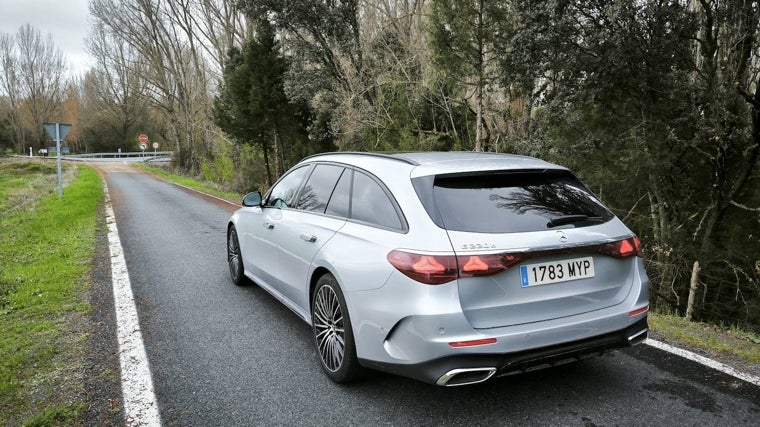 Fuel consumption is exceptionally low in this 220 d version, perfect for family travel.
PF
Fuel consumption is exceptionally low in this 220 d version, perfect for family travel.
PF
In fact, with diesel fuel averaging just 6.5 liters per 100 kilometers (6.5 litres per 100 kilometres/100 km) and even less on the motorway (we achieved fuel consumption between 5.8 and 6.2 litres per 100 kilometres without much effort), you can drive for a long time before emptying the 66-litre tank. This is a good thing, because driving the E-Class isn't boring at all. Obviously, at almost two tons, it's no agile sports car, and you have to accept some body movements with the standard suspension, which are smoothed out by the optional air suspension.
A worthy heir to the Universal image that the beautiful Italian Paola Margherita Maria-Antonia Consiglia Ruffo di Calabria, "the princess with sad eyes," and her husband Prince Albert contemplated sixty years ago.
ABC.es





